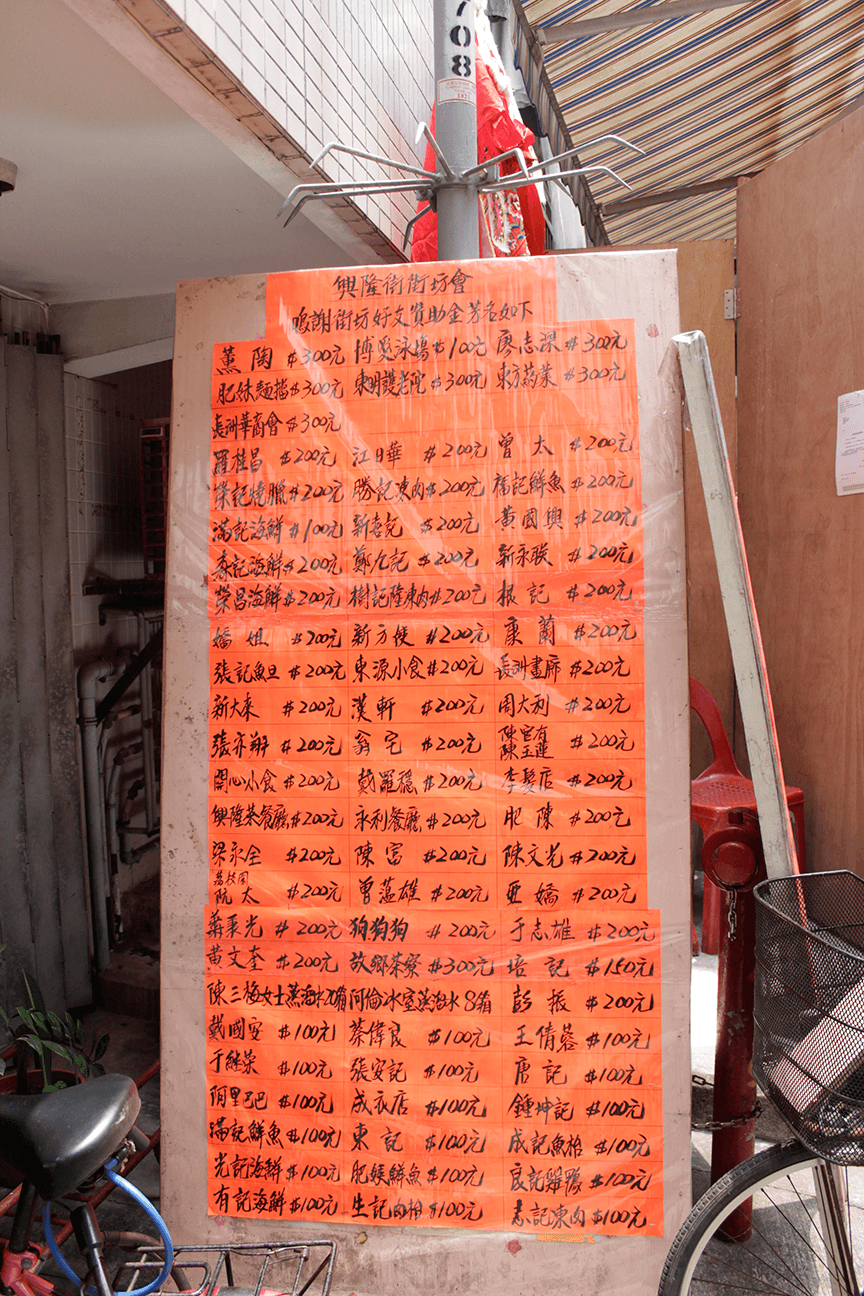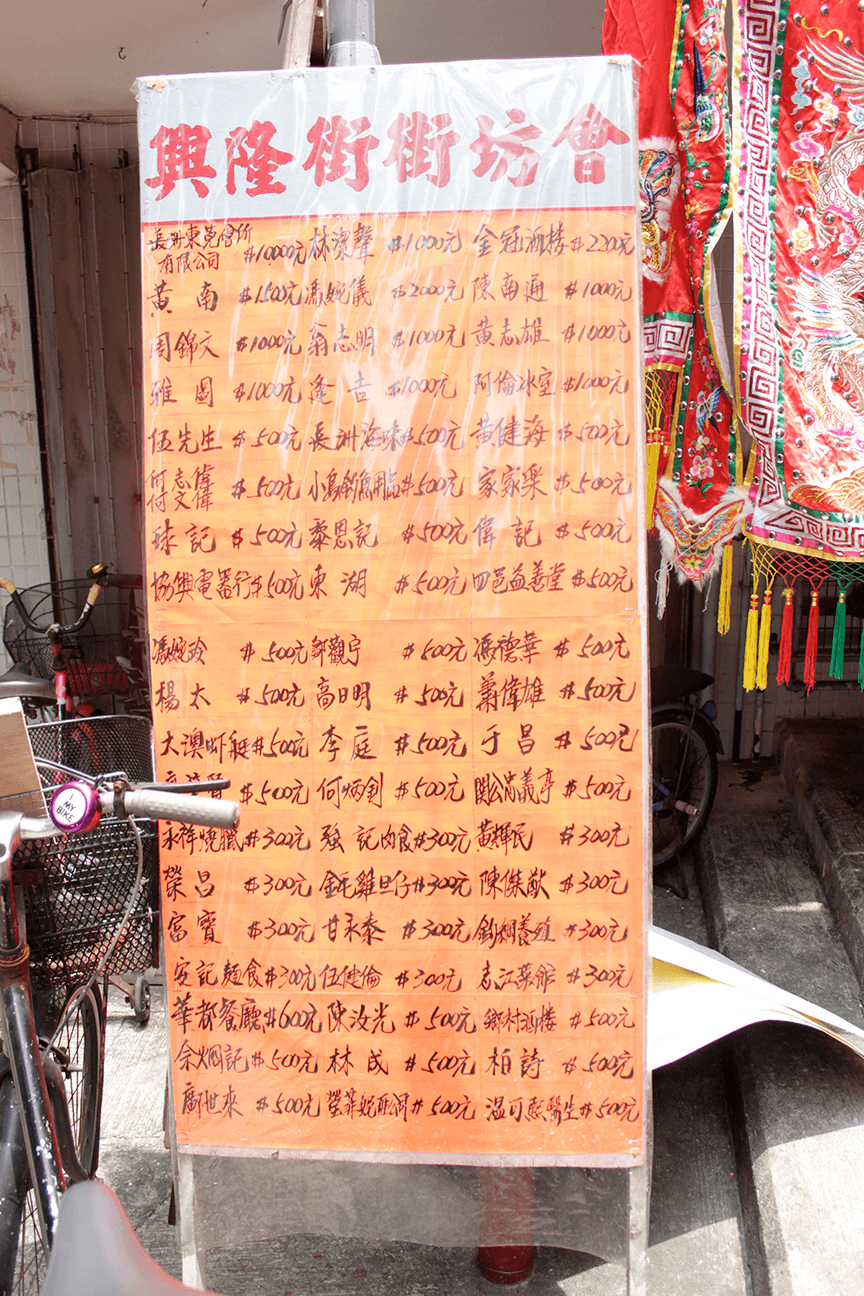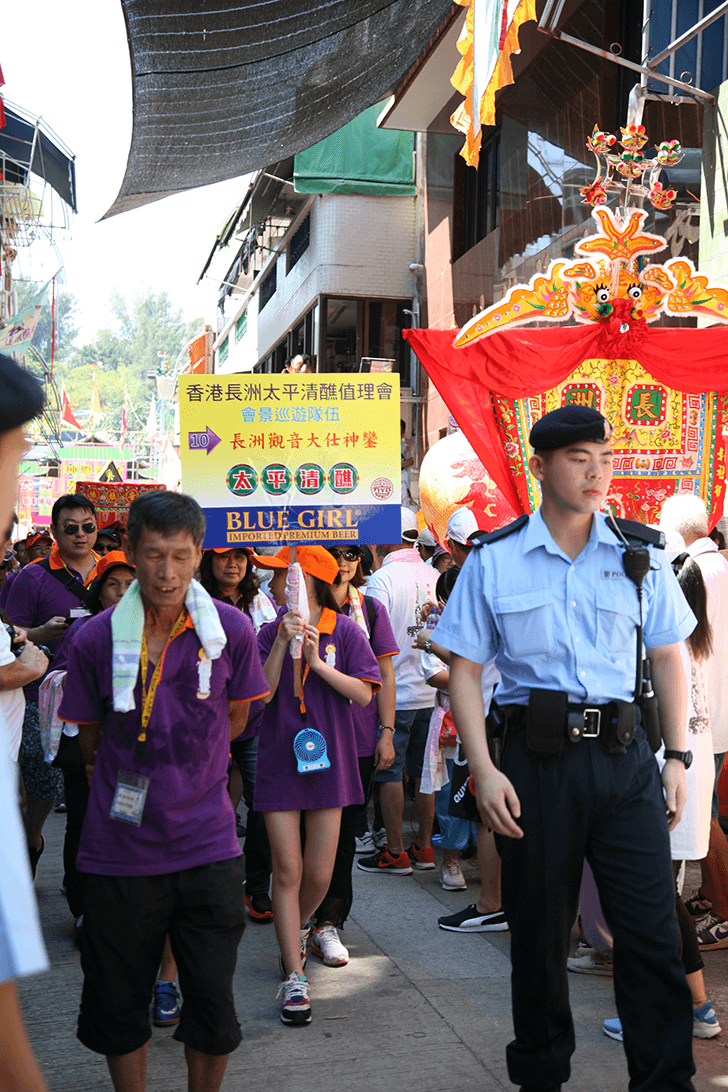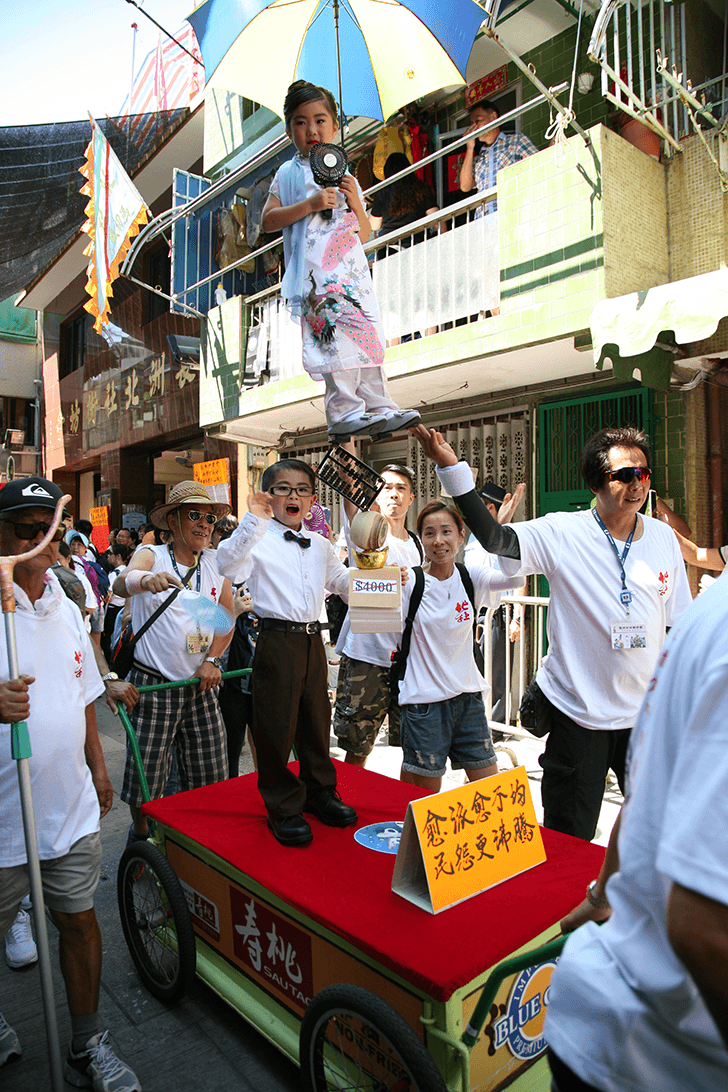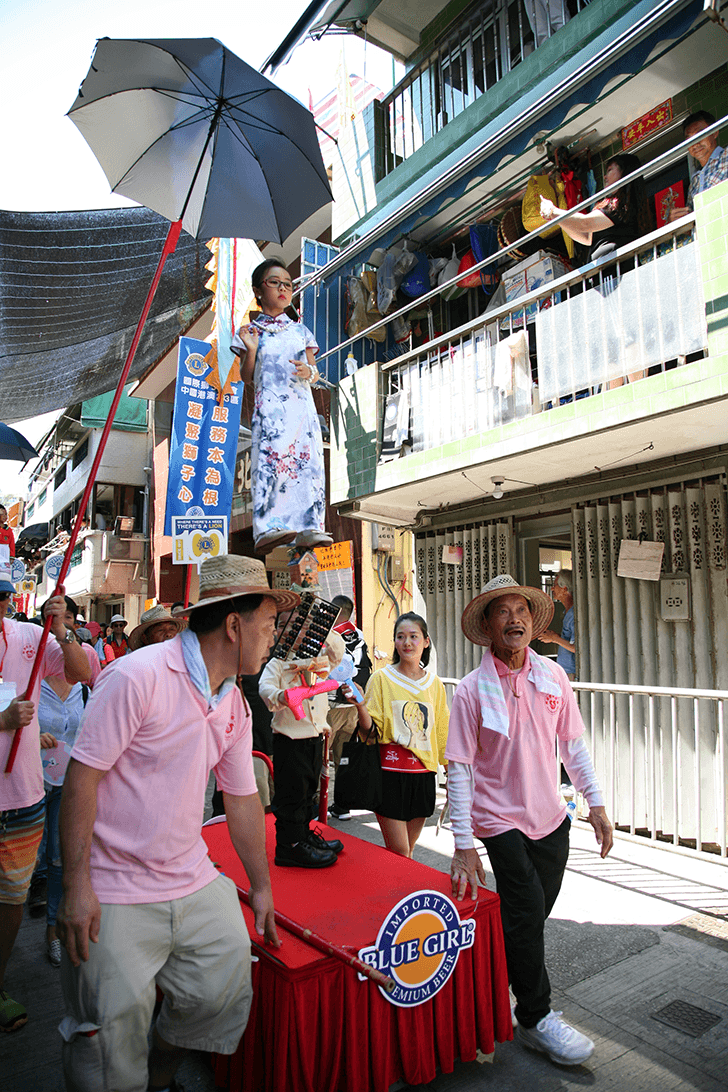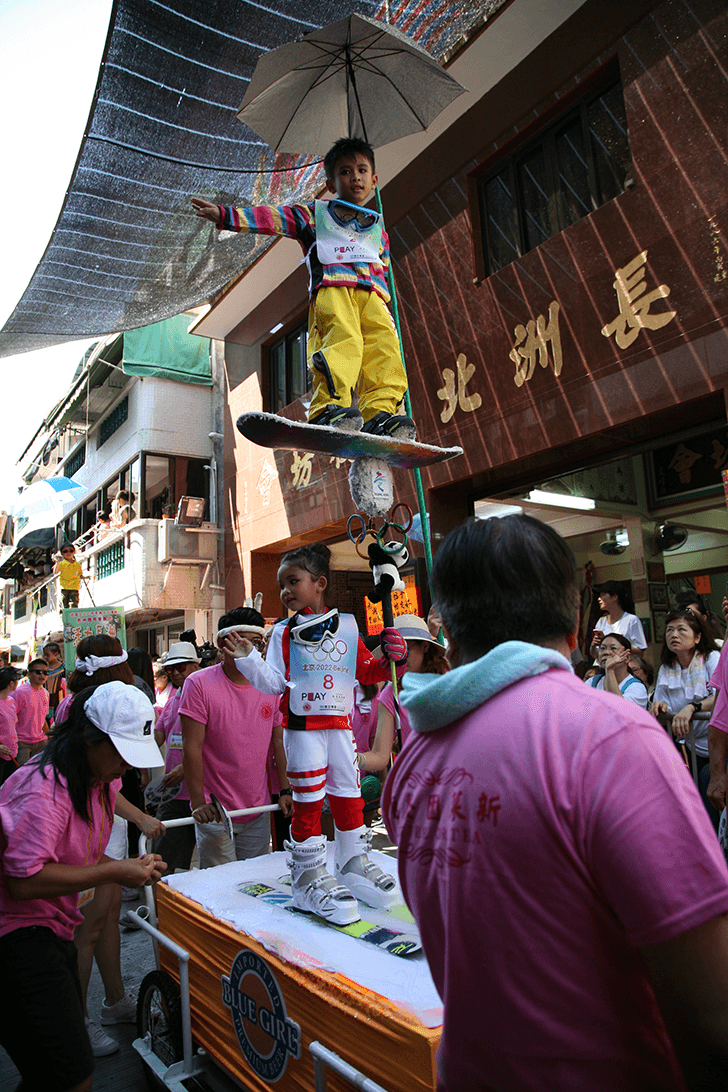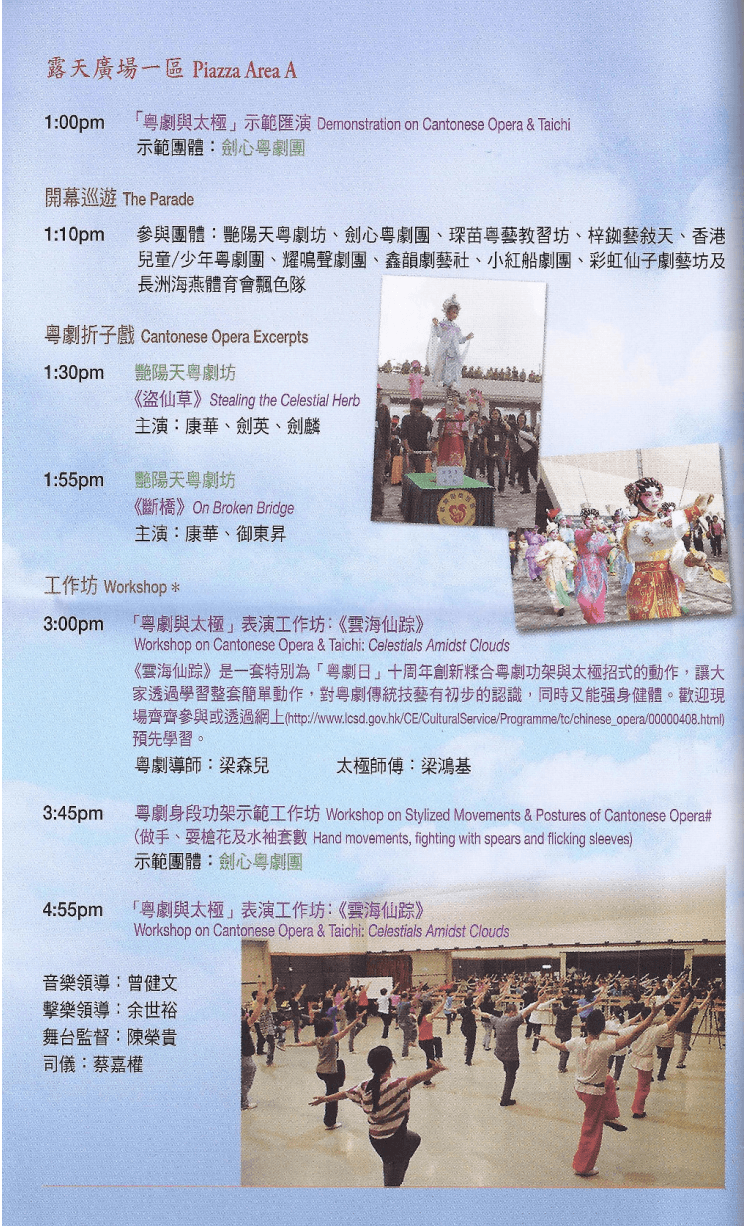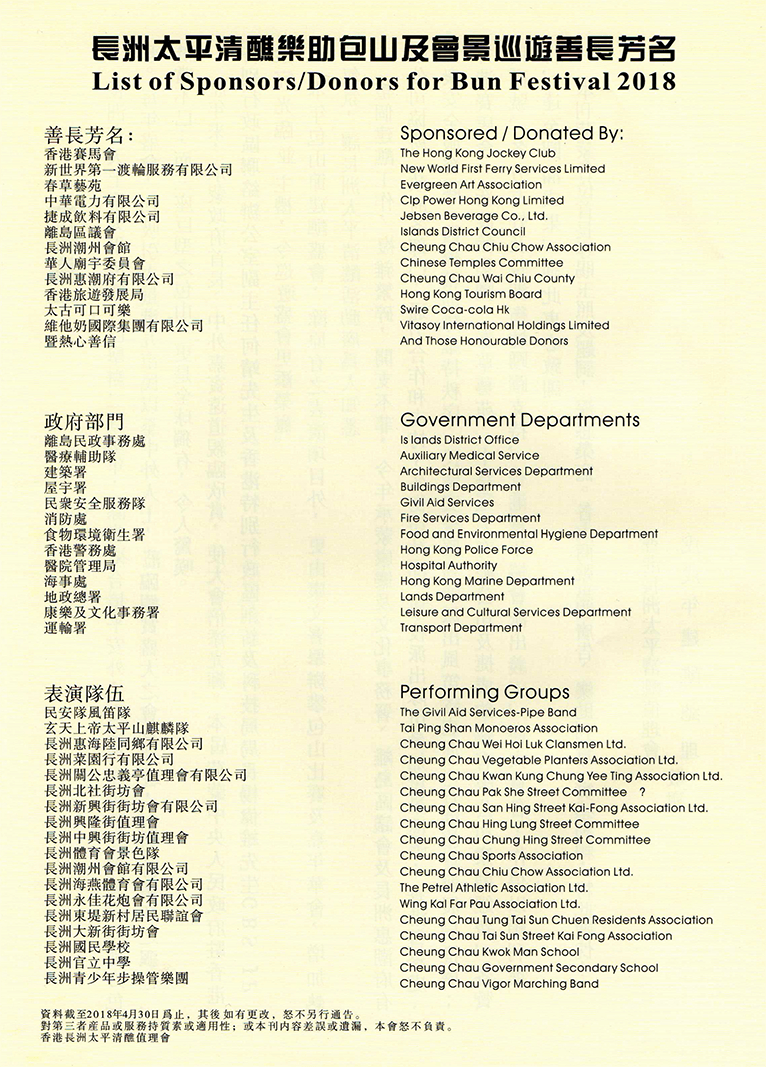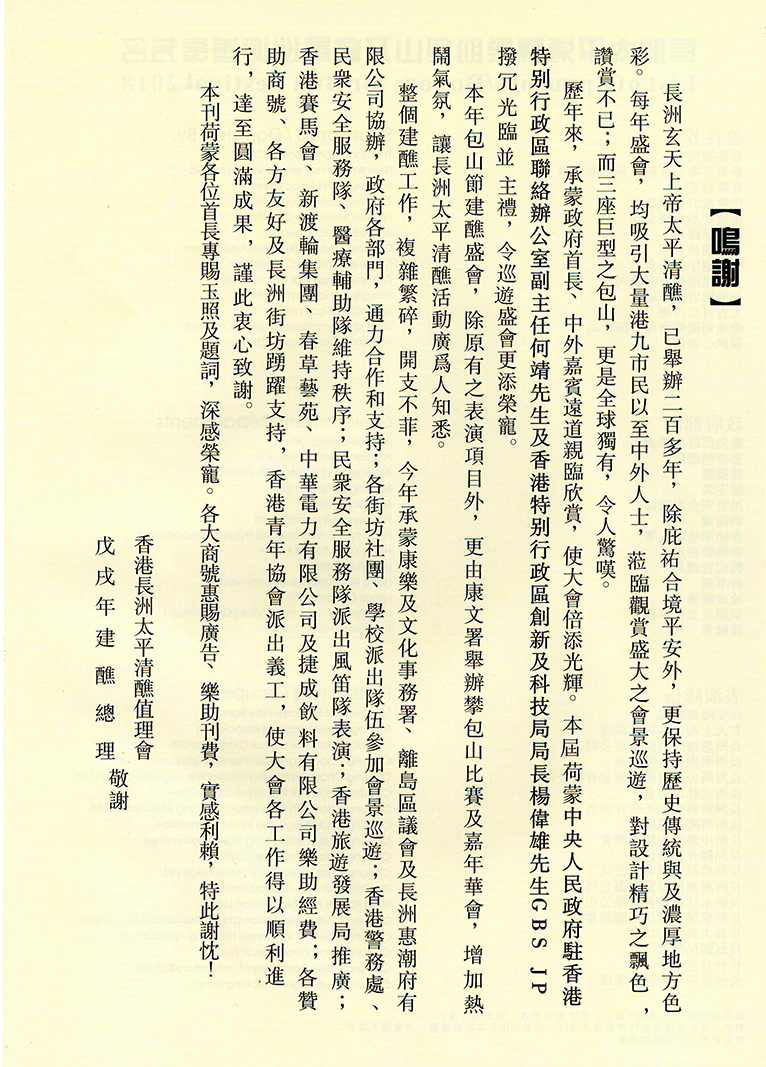ResourcesIntroductionThe Cheung Chau Bun Festival is a popular folk religion activity on the island with most public participation. It mobilises extensive material and human resources, including the organisers, street associations, parade teams, and volunteers. Being the centre of interest of the participating groups in the Festival, the Piu Sik Parade alone takes months of preparation; the Piu Sik production cost and the participating teams’ expenses are immense. Previously, funding was raised from kai-fongs and townsmen as well as a few commercial sponsorships because the government did not subsidise the festival. Since the Festival was inscribed onto the national list of Intangible Cultural Heritage (ICH) in 2011, the media has made numerous in-depth reports on the Festival. The government has begun financing the festival organiser, in which parts of the funding are redistributed to some Piu Sik teams. The Cheung Chau Bun Festival is a major international event featured by the Hong Kong Tourism Board. It attracts dozens of thousands of incoming tourists every year. Hence, it has gradually won various sponsorships as it is an exceptional venue for businesses to promote products. As a result, commercial support has become a new source of funding for Piu Sik production for the participating teams. Over the past twenty years, the ageing population has been a significant issue in Cheung Chau as most young islanders have moved away from the island for careers. But at the same time, the development of festival tourism has brought in commercial opportunities, drawing an influx of large corporations and emerging entrepreneurs. Plenty of new shops have sprung up in Cheung Chau, altering the communal and socio cultural structure of the island and blurring the idea of kai-fongs. In the past, every islander, regardless of the neighbours next door, shop owners or restaurant waiters, is seen as a kai-fongs. By contrast, owners of the new shops and of the large corporate operating the chain stores are from outside of the island and consequently, none of them endows the street associations or the parade teams. As a result, the funding for the festival of these groups has reduced directly. Subsidy from Kai-fongsIn the past, the organiser of the Cheung Chau Bud Festival had to raise money from the kai-fongs for the preparation of the festival. Mr. LEUNG Kwok-ming, the chairman of Chung Hing Street Kai Fong Committee, said, “We would first raise funds from kai-fongs in the same street or other people with the resources. We sought as much endowment from them as possible because the cost of the festival was immense, accounting for over 70,000 or 80,000 dollars. The expenditure of every street association was more or less the same. We all had to pay for the costume of the hovering kids, red pockets for the banner-bearers, and the general expenses of the assisting kai-fongs and volunteers. After the festival, we would also host a feast as a gratitude to all helpers, and its price was considerable. The props, costumes, makeup involved a large sum of money to produce, purchase, modify and transport, let alone the time and effort we put into the preparation. Therefore, it did take an abundance of human and material resources to pull off a festival. Because the festival is an annual highlight of the island, the kai-fongs are very supportive of both the Piu Sik production and logistics on the day of the festival. Besides, the kai-fongs are also helpful in other activities other than the Piu Sik Parade. These activities are seldom mentioned because the Bun Festival has cast a shadow over other events. Most of the kai-fongs are selfless and charitable. For instance, if a kaifong were away when we visited his places to raise funds, he would proactively come to us afterwards. So, we don't care how much they donate as the benevolence of the kai-fongs is what is paramount.”1 There are indeed many other religious ceremonies in Cheung Chau, for example, the Birthday of Pak Tai in early March, then the Birthday of Tin Hau, the Jiao Festival in April, and the Dragon Boat Festival in May. Hence, just halfway through the year, there are already an array of activities that require endowment from Cheung Chau kai-fongs and shop owners. Although most of the organisers do provide financial support, the participating groups still need to raise money from kai-fongs and commercial organisations. Therefore, the first half of the year is the peak season for fundraising. Regarding the Piu Sik Parade, master craftsmen often claim that building a Piu Sik from scratch cost a fortune – that is to make a brand-new frame, props and costume. By contrast, it is much more economical to reuse an old frame, installation parts and other items and costume with modest moderation. Nevertheless, red pockets are indispensably given to the volunteers and helpers who assisted in the festival as a symbol of good fortune. Moreover, there is unavoidably replacement of certain old materials with new ones. Together, these costs account for a considerable expense. Hence, donations from kai-fongs and shop owners are essential for these general expenditures. In fact, kai-fongs’ contributions have always been the primary source of funding for every Piu Sik production or parade teams. Most kai-fongs donate to the street association on the same street where they live. The associations will put up the donors’ name and the sum of endowment in a prominent location at its association’s address before the parade as a token of respect and the giving of credit and acknowledgement. This practice also informs the kai-fongs of the total amount of donation, increasing the transparency of the fundraising campaigns. (Figure 1, 2) However, since some streets are shorter and have fewer shops, the associations on these streets need to seek support from affiliated shop owners or associates. Today, there are over 100 community groups in Cheung Chau. Although the members of these groups live in different streets, some of them have built a close bonding in various activities. Therefore, street associations receive donations not only from the kai-fongs residing in the same street but also townsmen or members of other groups. As a result, establishing an excellent personal relationship with members of different groups is crucial for fundraising as well as recruiting volunteers. Some associations or groups, therefore, will give out mooncakes, spring couplets or other souvenirs during the Dragon Boat Festival, Mid-Autumn Festival or New Year so as to maintain a close and friendly relations with the kai-fongs. These social networks among the kai-fongs are genuinely a unique and joint outcome of the Festival and the community culture in Cheung Chau. Commercial SponsorshipSince the Cheung Chau Jiao Festival has been inscribed onto the national list of ICH, more and more commercial companies are sponsoring the festival organiser or the participating parade teams. Some companies provide advertising or publicity support to the organisers or commercial support to the parade teams. Some offer goods to the groups while some subsidise the expenses of the Piu Sik production. (Figure 3, 4, 5) “The sponsorship has only a symbolic meaning as it is not sufficient to cover the total expenses of our whole team. We still have to seek other sponsorship. In fact, the sponsorship is meant to support the organisers for their operation of the whole festival. The organisers then distribute only part of it to the participating teams”, said Mr CHENG Yat-ming, the Vice Chairman of Pak She Street Association.2 During the parade, one will see a lot of sponsored advertisements on Piu Sik cabinets. Most of them are advertisements of popular everyday commodities like beers, instant noodles. Large-scale ads of these commodities are also seen at significant locations such as at the foreground and background of the Bun Tower, prominent positions on the Guest Stage or on both sides of the Piu Sik cabinets. Because more and more tourists are visiting the Piu Sik Parade, media from around the globe are taking photos and reporting the event. Placing advertisements in the festival has become an effective way to promote local brands outside of the island as well as around the world. On top of that, every crew member of a parade team wears a team designed T-shirt. Groups receiving commercial sponsorship will print the sponsor’s trademark on their T-shirt. This concomitant promotion approach also helps to reduce the team's production cost indirectly. (Figure 6, 7) Placing advertisements on the Carnival Parade Catalogue issued by the Cheung Chau Bun Festival Committee is also a mean of providing sponsorship. Usually, vacation houses and restaurants in Cheung Chau will place advertisements on the catalogue alongside with some trademarks or greetings from prestigious shops; some companies, such as a local Chinese Medicine clinic in Cheung Chau, even placed a promotional announcement on the catalogue. The advertisement fee may not substantial as the ads target only the islanders. But it is still a way to cover the printing cost of the catalogue, or even a source of income for the festival committee. Private FundingSome associations like the athletic clubs in Cheung Chau will make use of their unique characteristics to obtain extra funding by seeking sponsorships independently as well as organising or participating in various activities and reserve part of the reward to cover Piu Sik production expenses. For instance, an athletic club in Cheung Chau sets up a booth to promote Piu Sik in the Bun Carnival organised by the Leisure and Cultural Services Department. Then on the night of the Bun Scrambling Competition, the club also put on a lion dance and drum performance before the competition. Martial art courses are the primary source of income for athletic clubs. After deducting the essential expense, the rest of the revenue will be put into their foundation fund for Piu Sik production. Sometimes, sponsors may want to commission a Piu Sik set according to their preferences. These athletic clubs will facilitate this kind of requests at a slightly higher price. For that reason, the extra earnings will further raise the “net income” of these clubs. (Figure 8) In fact, some regional festivals and folk arts activities outside of Cheung Chau have invited Cheung Chau Pik Siu teams to participate as a special performance in their events. Although the Piu Sik performance in these occasions is stripped of the religious connotation of the Cheung Chau Jiao Festival, it fulfils the promotional purpose and helps to balance out the parade teams’day-to-day operational expenses. Besides, these occasions can also be seen as a communication channel for different organisations, potentially fostering future collaboration or cooperation. Local SupportAccording to unofficial sources, the annual expenditure of the Cheung Chau Bun Festival can exceed a million dollars. The construction of the Bun Tower, ritual performance theatre, temporary altars, and the guest stage alone already accounts for a large proportion of the total expense. The financial support from the government is minimal. The Island District Council is one of the few primary funding sources. However, as its subsidy has only raised from 50,000 to 100,000 dollars over the years, its support is far from enough to cover the vast expenditure. Hence, the festival committee could hardly sustain the whole festival without the support from the kai-fongs and the sponsorship from large commercial corporations.3 And although various government departments, namely the Leisure and Culture Services Department, the Islands District Council, the Transport Department, the Hong Kong Police Force, the Fire Services Department, and a few uniform groups, including the Auxiliary Medical Service and Civil Aid Service, are involved with the Festival, they only remain in a support role. (Figure 9) (Figure 9) The annual Parade Catalogue will list the support from the government and sponsors. 2018 Carnival Parade Catalogue. 1 Chairman of Chung Hing Street Kai Fong Committee, Mr. LEUNG Kwok-ming, (personal communication, April 18, 2018) 2 Pak She Street Association, Vice Chair Mr. CHENG Yat-ming (personal communication, April 18, 2018) 3 Chairman of Cheung Chau Bun Festival Committee, Mr. YUNG Chi-ming (personal communication, April 20, 2018) |

